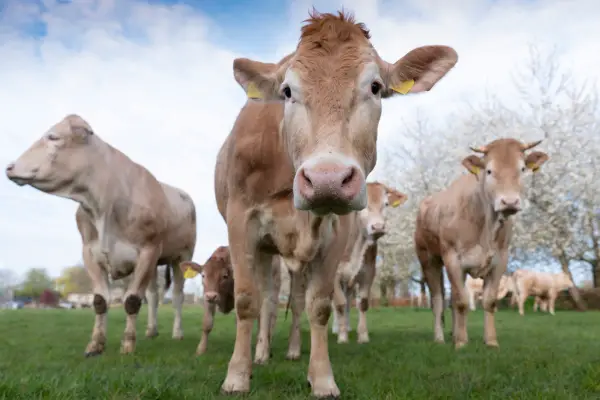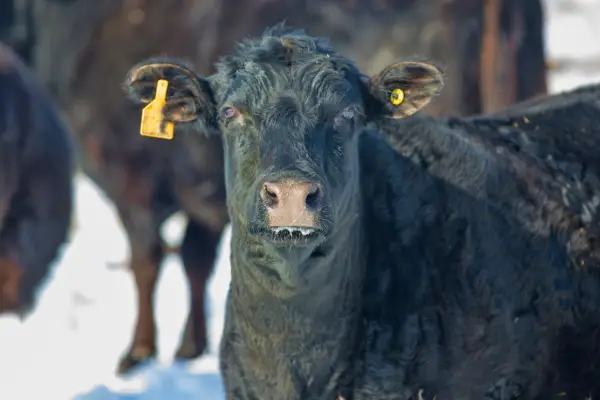Beef Cattle Reproduction
Raising beef cattle for meat production is a major industry globally. Optimizing the reproductive performance of a beef cattle herd is crucial for profitability. This allows producers to maximize the number of calves born each year to be raised and sold for beef.
In this blog article, we will provide an in-depth overview of key aspects of beef cattle reproduction and how producers can improve productivity.
Beef Cattle Reproductive Anatomy and Physiology
Understanding the anatomy and physiology involved in reproduction is key to improving productivity. Beef cows and heifers (young females) have reproductive tracts allowing them to produce eggs (ova), mate with bulls, become pregnant, nourish the fetus, and give birth to calves.
The main structures involved are the uterus, cervix, vagina, ovaries containing ova, and vulva. Hormones like estrogen, progesterone, oxytocin and prostaglandins control reproductive cycles and processes like heat (estrus), pregnancy, calving, milk production and maternal behaviors through feedback systems within the brain.
Bulls have testes, a scrotum, penis, and accessory sex glands that produce sperm and hormones like testosterone. By optimizing these systems through balanced nutrition and healthcare, more calves can be born without issues.
Puberty and Natural Breeding in Beef Heifers
Reproduction starts with heifers reaching puberty, becoming fertile, cycling, and able to conceive. With good nutrition and genetics, puberty typically hits between 6-15 months with first estrus around 12-13 months.
Estrus or “heat” is when heifers ovulate and exhibit mating stance to bulls for successful natural breeding. Each cycle is around 18-24 days and estrus itself lasts 12-18 hours giving a short breeding window. Bulls must have reached puberty and pass breeding soundness exams before mating.
Using bull-to-heifer ratios around 1:25 allows all heifers to become pregnant within their first cycles through natural breeding during a controlled season of around 60-90 days.

Artificial Insemination in Beef Cattle
To further maximize reproduction efficiency, beef herds often use artificial insemination (AI) systems. Specialized AI techs collect semen from performance-tested, genetically superior sires and synchronize and inseminate females.
This allows mass use of semen from top bulls with traits like high calving ease, growth rates, marbling, and yields. It also eliminates risks of injury from breeding bulls. Timed artificial insemination programs allow fixed-time breeding using hormones avoiding estrus detection.
Fertilized eggs then embryo transfer can also expand use of top genetics. Integrating AI with elite natural bulls in a hybrid system is a common approach on many operations.
Gestation, Calving Management and Calf Health
Once pregnant, proper nutrition and care is crucial for healthy calf development in utero until the calving date. The average gestation period in beef cattle is around 285 days. Providing the correct prepartum diets, vaccinations, and minerals aids calf growth and colostrum quality.
Facilities like calving pens and sheds should be clean, dry, and comfortable for calving. Stockpersons must monitor cows for signs of imminent calving like udder development, relaxation of pelvic ligaments and vulva swelling.
Once calves are born, ensuring they stand, nurse colostrum immediately and are protected from the elements is key. Processing newborns by weighing, tagging, testing, castrating etc at 2-6 weeks finishes initiating the next calf crop.
Postpartum Cycling and Breeding After Calving
Following the intense process of calving and initiating lactation, getting cows cycling and bred back quickly is vital to keeping yearly calving rates high. The period between calving and first heat can be affected by dystocias, uterine damage, nutrition and nursing.
A 60-90 day postpartum anestrous period is normal but can be minimized through optimal body condition and early weaning. Cows exhibiting estrus 4-6 weeks post-calving have the highest re-conception rates.
Using techniques like estrous synchronization, concentrated breeding seasons and whole-herd bull exposure gets cows bred back faster for the next calf crop. Checking pregnancy 6-12 weeks later catches any open females for rapid rebreeding and culling.

Nutrition and Herd Health to Improve Fertility
While genetics set reproductive capacity, nutrition and veterinary health programs promote reaching that potential. Deficiencies and imbalances of proteins, energy, minerals and vitamins can significantly hinder every aspect of cow-calf productivity and profitability.
Adequate body condition score at calving and breeding through quality forage, supplements and feed resources is crucial. Herd health programs including vaccinations, deworming, and prompt treatment of issues like prolapses, metritis, scours etc also play key roles in reducing infertility and improving productivity over a cow’s lifetime.
Working closely with qualified nutritionists and veterinarians tailored to specific operations is key.
Managing Replacement Heifers for Sustainability
To sustain a top-producing beef cattle herd long-term, quality replacement heifers must enter the herd before old cows expire. Growth targets for weaned heifers approaching first breeding may average around 65% of their expected adult weight.
Developing excess heifers accounts for facilities, losses and culling rates before their first calf. Uniform heifer groups with coordinated breeding and calving periods simplify management, improve productivity over their lives and increase longevity within the herd.
Tracking detailed records on every animal from birth allows quantifying how management strategies truly impact reproduction and bottom lines.
Conclusion
There are intricate details underlying beef cattle reproduction, but the basic cycle ultimately determines the success of cow-calf operations. Continually optimizing nutrition, healthcare, genetics, facilities resources and management towards greater reproductive efficiency is key to profitability.
By improving rates of fertile matings, conceptions, live calves born and weaned and fast rebreeding of cows, more pounds of calves can be efficiently marketed off the same acreages year after year.
Working closely with qualified experts and veterinarians to develop data-driven management plans allows producers to maximize reproductive success within their beef cattle herds.

